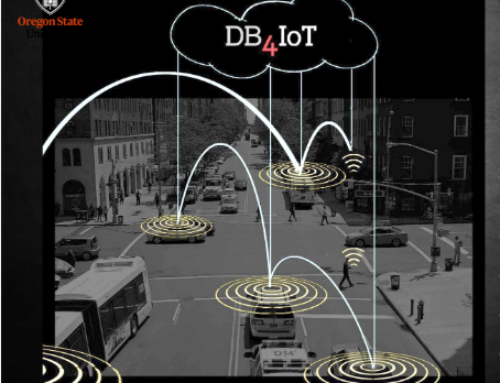Click here to view the Webinar
We introduced Moonshadow Live Traffic powered by Wejo’s connected vehicle data in July. Only three months later the Departments of Transportation (DOTs) of Alabama, Florida, Georgia, North Carolina, South Carolina, Tennessee and Virginia decided to test out our system in a Proof of Concept to get real-time traffic information during hurricane evacuations. The Eastern Transportation Coalition approached Wejo and Moonshadow in August with the question if Wejo’s real-time connected vehicle data could facilitate faster and safer evacuations.
 Wejo Connected Vehicles in the Seven State Area as Hurricane Sally Approaches the Florida Panhandle
Wejo Connected Vehicles in the Seven State Area as Hurricane Sally Approaches the Florida Panhandle
Over 60 million people, or 20% of the US population, live in the seven state area. Wejo has over two million vehicles on its platform in these seven states. The vehicles send a location update every three seconds while they move. In the above image the connected vehicle data is shown by speed running from red (0 KM/HR) to yellow (50 KM/HR) to blue-green (100 KM/HR). During peak hours Moonshadow receives over 100,000 vehicle updates per second from Wejo.
During an evacuation one of the biggest problems for traffic managers is how to avoid congestion on major escape routes. With the Moonshadow/Wejo live system, traffic management centers have up to date information on speeds and congestion from hundreds of thousands of driving vehicles within minutes. They can see when traffic is becoming congested and where they need to implement lane direction reversals to increase capacity. The system shows which alternate routes are still moving well and how traffic should be redirected. By playing back movement over time they also have a good idea when and where the public is evacuating for the approaching hurricane.
 Moonshadow Live Traffic shows Wejo connected vehicles as Hurricane Sally makes landfall in Mobile (AL)
Moonshadow Live Traffic shows Wejo connected vehicles as Hurricane Sally makes landfall in Mobile (AL)
Moonshadow Live Traffic features a variety of background maps and image layers. The above image was generated automatically in Moonshadow Live Traffic by using an ESRI satellite image to show the land mass, superimposing it with a NASA Gif layer to show the cloud coverage and then drawing the Wejo connected vehicle data over it. Users can zoom in on any area and select any moment in time to view Wejo vehicle movement. NASA updates its cloud images once per day and Moonshadow Live Traffic will automatically pull the correct daily image to synchronize it with the vehicle movement time.
 Traffic on the coast is stalled as Hurricane Sally makes landfall.
Traffic on the coast is stalled as Hurricane Sally makes landfall.
In the above image we have zoomed in on Mobile (AL) and the Florida Panhandle. The ESRI landmass is obscured by the spectacular clouds from Hurricane Sally. We are displaying the observed traffic in the 30 minutes before and after Sally made landfall around 06:00 AM on September 16, 2020. All of the traffic close to the coast is shown in red as vehicle movement there is slow. We only see faster movement in blue-green on roads further North or away from the storm epicenter.
 Comparing traffic in Mobile and Pensacola during Hurricane Sally with one week earlier.
Comparing traffic in Mobile and Pensacola during Hurricane Sally with one week earlier.
In the above image we have zoomed in further on Mobile (AL) and Pensacola (FL) and we have opened a second time window. The above image shows the 30 minutes before and after Hurricane Sally made landfall on September 16. The lower image shows the exact same time period one week earlier – which we can consider a normal traffic day. We see that the traffic between Mobile and Pensacola is completely disrupted as Sally hits the area. Traffic in Panama City, further to the East, seems more normal.
 Traffic in Mobile and Pensacola is disrupted as Hurricane Sally hits as compared with one week earlier.
Traffic in Mobile and Pensacola is disrupted as Hurricane Sally hits as compared with one week earlier.
The above uses an ESRI dark background map and we have turned off the NASA cloud layer. We have zoomed in further on Mobile and Pensacola. The top image shows the hour that Hurricane Sally made landfall and we can see that there is almost no vehicle movement in the low lying land just East of Mobile Bay. The bottom image shows the Wejo vehicle observations from exactly a week earlier. In that image we can recognize all the smaller roads as vehicles send updates every three seconds. The Eastern stretch of the main freeway from Mobile to Pensacola, I10, shows no traffic as Sally is raging. In the image from a week earlier it shows high volumes and high average speeds.
 Major roads show no traffic as Hurricane Sally makes landfall.
Major roads show no traffic as Hurricane Sally makes landfall.
Moonshadow Live Traffic snaps the incoming Wejo waypoints onto OpenStreetMap road segments in real time to visualize the data by road segment. Instead of looking at waypoints we are now looking at road line segments. The top image shows traffic on the major roads around Pensacola (FL) for a 30 minute time period when Sally made landfall on September 16. If a line is not drawn then there was no observed traffic. We see in the top image that major segments of the I10 freeway had no traffic on September 16 between 05:30 and 06:00 AM. The bottom image shows traffic on almost all road segments and at higher speeds on September 9.
One of the main goals of the Proof of Concept is to estimate traffic volumes in real time during evacuations. Moonshadow Live Traffic will use the scaling factors to estimate the total amount of traffic on each road segment at any point in time. “I am very excited to bring this ground-breaking work to our member states. Real time volumes are the most important piece of missing data that agencies need today, especially when monitoring severe weather events such as hurricanes.” Says, Denise Markow, Director of the Eastern Transportation Coalition. “ Currently transportation agencies must rely on archived, historical data to make real time operational decisions. Data from vehicles is the future and the Coalition is committed to pushing the innovation barrier to bring agencies critical information especially when it comes to cross border movements.” Once the Eastern Transportation Coalition became aware of Moonshadow Live Traffic with Wejo Data they rounded up seven of their member state DOTs to participate in a Proof of Concept for this fall. Traffic managers from all seven states can access the system from a web browser whether they are in the Traffic Management Center (TMC) or on the road. The maps update automatically every few minutes to show the latest data.
Moonshadow Live Traffic with Wejo data is available for any area in the U.S. and can help DOTs, MPOs and cities to better understand evacuation traffic trends from hurricanes, fires, flooding or any other natural disaster. The real-time data is retained to help with historic analyses.

